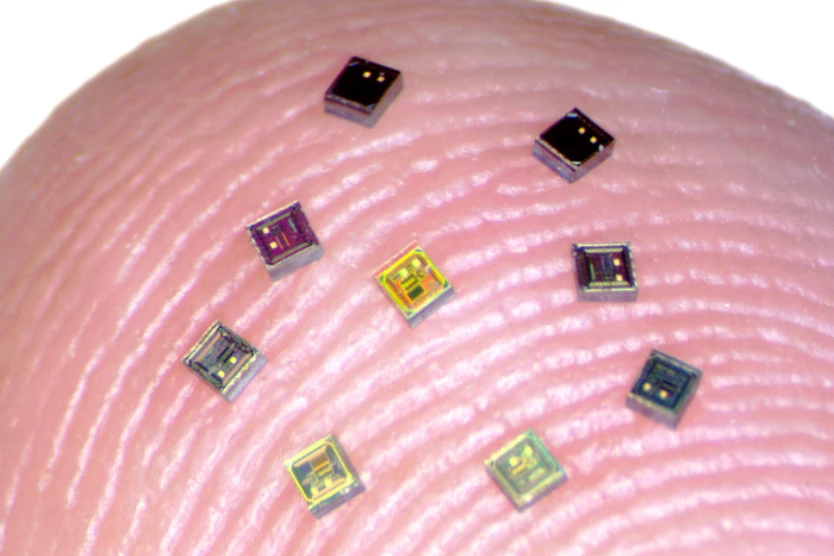Whether they're being used for research or for restoring lost capabilities to the disabled, brain-computer interfaces (BCIs) show a lot of promise. They could soon be much more effective, thanks to the development of tiny new sensors.
In many existing BCIs, electrodes are implanted directly into the brain. Typically just a couple or so are implanted, each one stimulating and/or monitoring the electrical activity of up to a few hundred neurons in one area.
While that may sound like a lot, there are about 86 billion neurons in the brain. Scientists have therefore been looking into ways of covering many more of them at once – in many more areas – without filling a patient's brain up with conventionally sized electrodes.
Four years ago, scientists from Rhode Island's Brown University, Texas' Baylor University, the University of California at San Diego, and Qualcomm started developing a higher-resolution alternative. Known as neurograins, the resulting sensors are much smaller than traditional implanted electrodes – each one is approximately the size of a grain of salt.
Once implanted, a network of many neurograins is wirelessly powered by a "thumbprint-sized" thin electronic patch that is adhered to the patient's scalp. That patch also receives electrical signals from the sensors, plus it's capable of sending signals to them, causing them to stimulate adjacent neurons.
In a recent demonstration of the technology, 48 of the neurograins were implanted onto the surface of a live rat's cerebral cortex. Utilizing the sensors, scientists were able to both record characteristic neural signals associated with spontaneous brain activity, and to stimulate the cortex in specific regions.
In its current form, the technology could reportedly be used to create networks of up to 770 neurograins within one patient's brain. That said, the scientists believe that it may one day be possible to implant thousands of the sensors, for a currently impossible degree of neural monitoring and neuro-stimulation.
"Our hope is that we can ultimately develop a system that provides new scientific insights into the brain and new therapies that can help people affected by devastating injuries," says Brown's Prof. Arto Nurmikko, senior author of a paper on the study. That paper was published this week in the journal Nature Electronics.
Source: Brown University via EurekAlert




